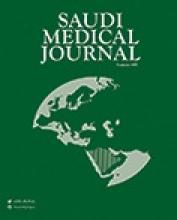To the Editor
I have read with interest the case report by Zhang et al1 on the primary extra skeletal mesenchymal chondrosarcoma (PEMC) arising from the iliac vein in a Chinese patient.1 I presume that the following point ought to be considered in the studied patient. It is obvious that apart from opportunistic infections, individuals infected with human immunodeficiency virus (HIV) are at an increased risk for various neoplastic disorders due to impaired humoral and cellular immunity. The collection of malignancies among HIV infected patients could be divided primarily into 2 groups: those associated with HIV (all of which are related to viral diseases) and those not associated with HIV (only some of which are associated with viral diseases). The origin of these malignancies is considered to be multifactorial, and the main causes that have led to an increase in tumor disease are thought to be immunosuppression, co-infection with oncogenic viruses, and life prolongation secondary to the use of antiretroviral therapy.2 To my knowledge, HIV infection is an important health threat in China. Though no recent data are yet present on the exact HIV seroprevalence in China, the available data pointed out that by the end of 2014, the number of people living with HIV/AIDS accounted for 0.037% (501,000/1,367.82 million) of China’s total population.3 Although there are still some undiagnosed cases of HIV/AIDS, the national HIV/AIDS epidemic overall has maintained a low-prevalence trend. Around the country, 97% of counties (districts) (3,017/3,109) in 31 provinces (autonomous regions and municipalities) have reported cases of people living with HIV/AIDS, but the epidemic varied greatly in different regions.3 Moreover, the percentages among people who inject drugs were reported to be 6% and who have sex with men were 7.7%.3 In the view of the substantial threat of HIV infection in China and aggressive nature of the tumor that primarily originated from unusual site as well as the protracted clinical course culminating in multiple bone metastasis and the death of the studied patient, I presume that underlying HIV infection ought to be seriously considered in the studied patient. Hence, contemplating the diagnostic panel of CD4 count and viral overload measurements was solicited. If that diagnostic panel was carried out and it demonstrated underling HIV infection, the case in question could be confidently considered a novel case report as HIV-associated PEMC has never been reported in the literature so far.
Reply from the Author
No reply was received from the Author.
- Copyright: © Saudi Medical Journal
This is an open-access article distributed under the terms of the Creative Commons Attribution-Noncommercial-Share Alike 3.0 Unported, which permits unrestricted use, distribution, and reproduction in any medium, provided the original work is properly cited.






